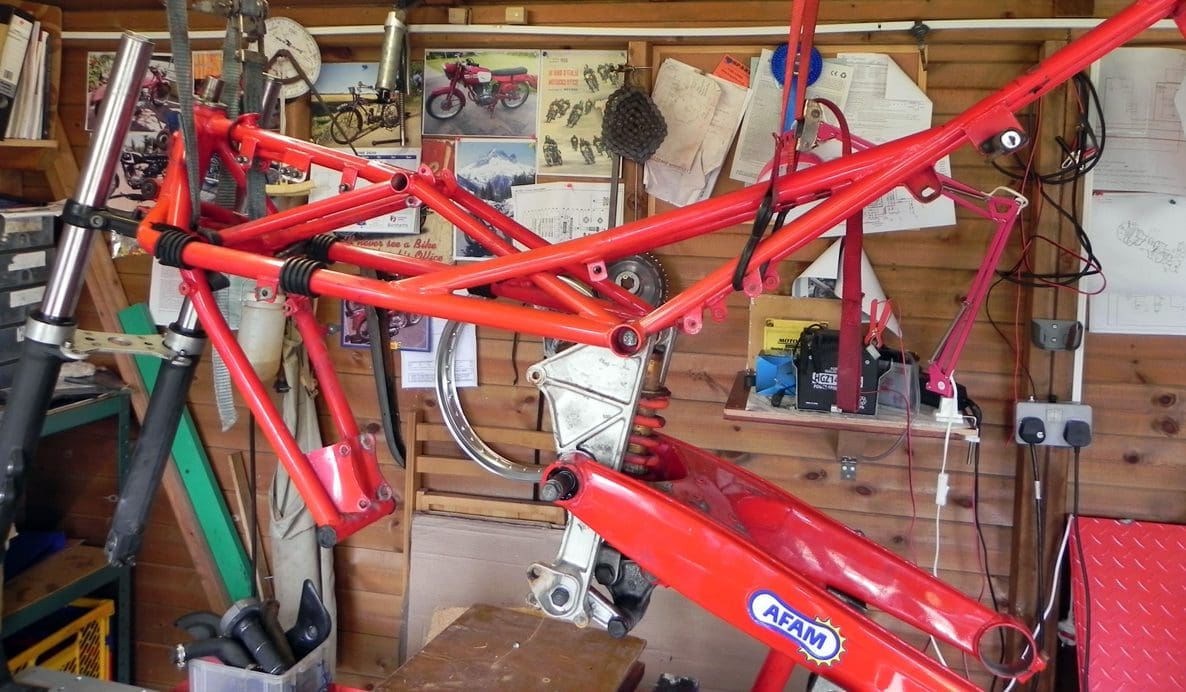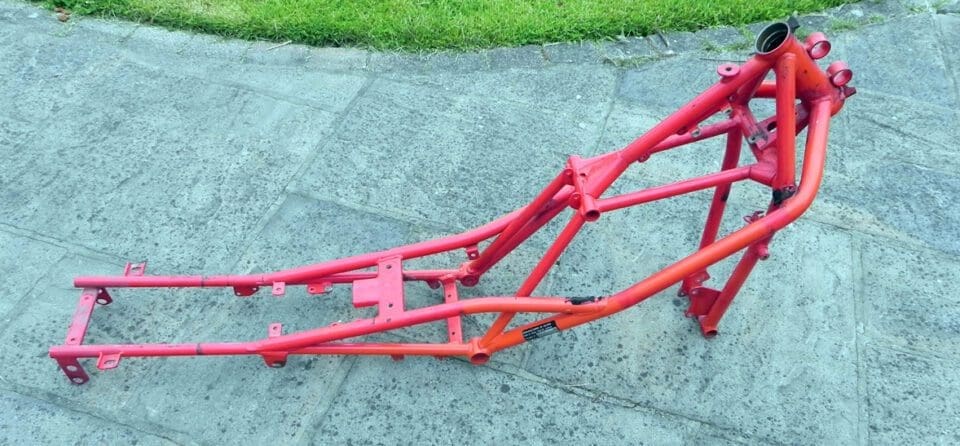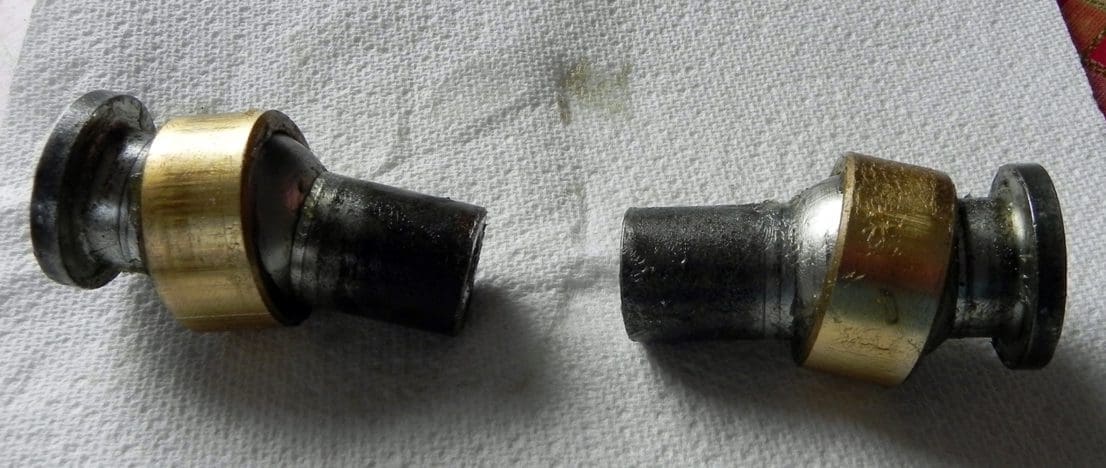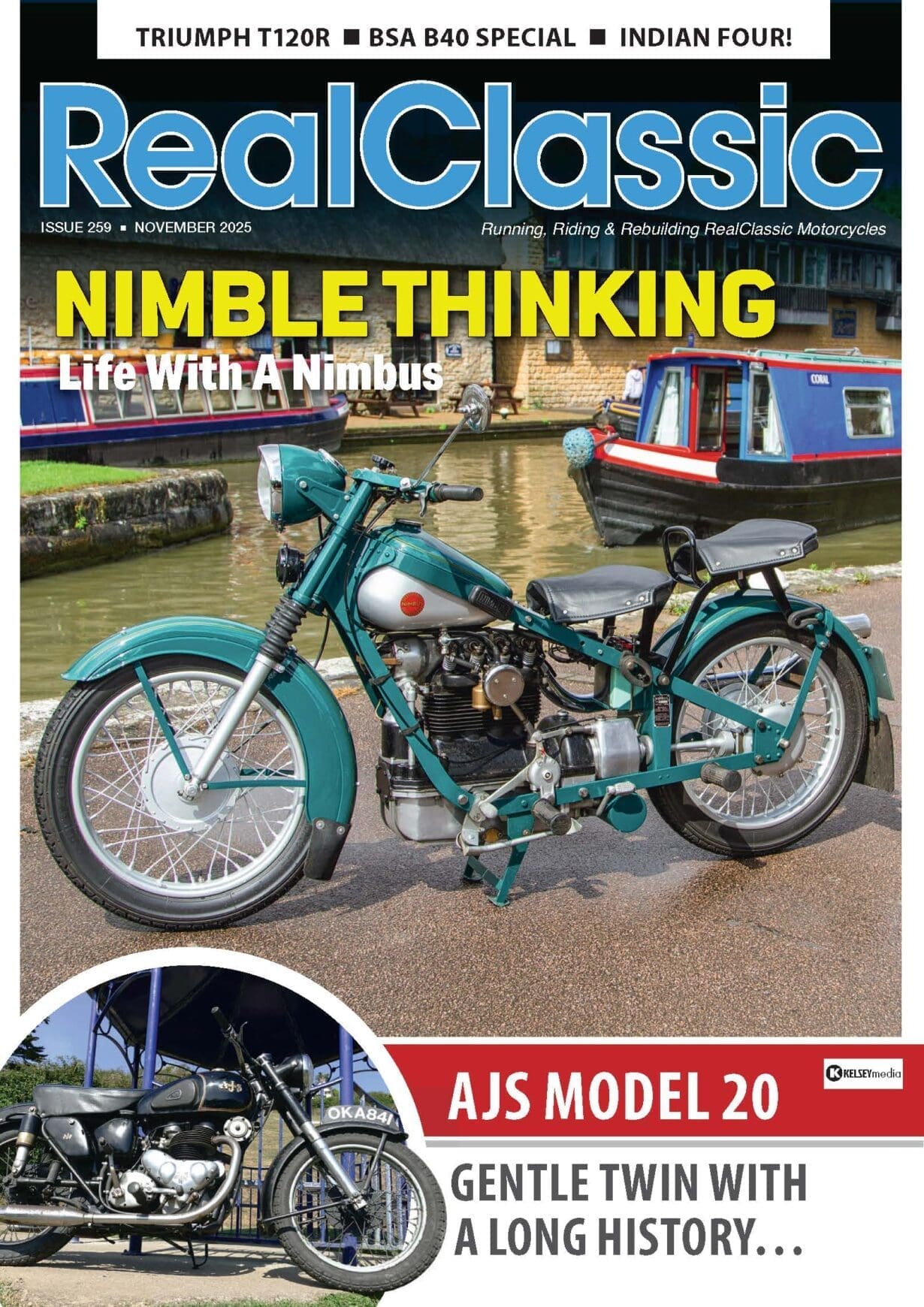Stu Thomson has a knack for finding unusual Italian lightweights, and this time he’s secured a dohc water-cooled single-cylinder sportbike. It’s one of the supermono café racers which were so popular back in the late 1980s / early 1990s. While a few 500s were imported into the UK, the smaller 350s were shipped straight to Japan, and now they’re reaching the classic market worldwide. Stu tells us all about the model’s history in the magazine, and takes us for a test ride on his bike, but first he has to get it into good working order…

I’ve previously rebuilt an Italian-type small production run model; a Yamaha Belgarda SZR660 so I was ready for some oddities when my grey-import Gilera was delivered. The paint has faded and cracked quite dramatically. This happens to cellulose paint as it evaporates and shrinks throughout its life. The wheels should be red but have a reputation of fading quickly to salmon pink. Mine have been painted white, but not well: applied by brush… over the pink!
I managed to get a manual and a parts book for the range of Gilera models fitted with the Bialbero 4-stroke engine; 350, 500, 550, 600 and 660cc. The pictures are not brilliant but at least the words are in English. There is also a Facebook group for owners of the Bi-4T engine (Bi = Bialbero , 4T = 4-stroke) where the majority of owners have the off-road versions of the bike, and use them regularly to good effect.
Enjoy more RealClassic Magazine reading every month.
Click here to subscribe & save.

My first operation is to make a photographic record of the bike, including any reference numbers on machine plates and engine. This eases the later process of obtaining an age-related plate. That should be straightforward for this bike as it has the original Japanese registration cessation document indicating the first and only owner, date of first registration, NOVA documents, and receipt from the importer.
FRAME DESIGN
Similar to the Ducati L-twin designs of the period, the frame is a ladder-type with the engine hanging from it, and forming a stressed part of the frame. The swinging arm is a welded-up, pressed steel construction with spherical self-aligning swinging arm bearings, with cast alloy engine/frame plates. Press reports suggested that the swinging arm was alloy and it looks like it could be, until the paint is removed and the mild steel construction is revealed.
The sidestand bracket is a weak point and has a habit of breaking off due to vibration and minimal material around the bolt holes. So I strengthened it by adding material. On some bikes the sidestand flips up automatically, and there’s no centrestand, this being a café racer. I decided to remove the engine from the frame to refresh the paint as most of it was falling off. The only recalcitrant bolt was the rear engine mounting bolt, a known issue.

The frame seems quite simple in design and testament to the skill of Italian welders and jig builders, although their skill did not stretch to removing weld spatter and cleaning up welds / removing corrosion prior to painting! As an engineer working in the confectionery industry, we always ‘dressed’ welds for easy cleaning and removed spatter just in case it fell into the product. That would not go down well; steel is not an accepted ingredient for a chocolate-based confection…

I have rebuilt many machines over the years but had never seen swinging arm bearings like the ones fitted to the Saturno before. There are two types of this bearing: one which can be greased and the ones fitted here which have a Teflon liner inside the housing for the ball to run on. To replace these bearings with greaseable units the cost is £45 each!

NEXT TIME: into the engine…
AND LOOK OUT for the full feature coming in the monthly magazine, where we learn the background to the Nuovo Saturno and Stu rides his bike once it’s done…
Words and photos: Stu Thomson



